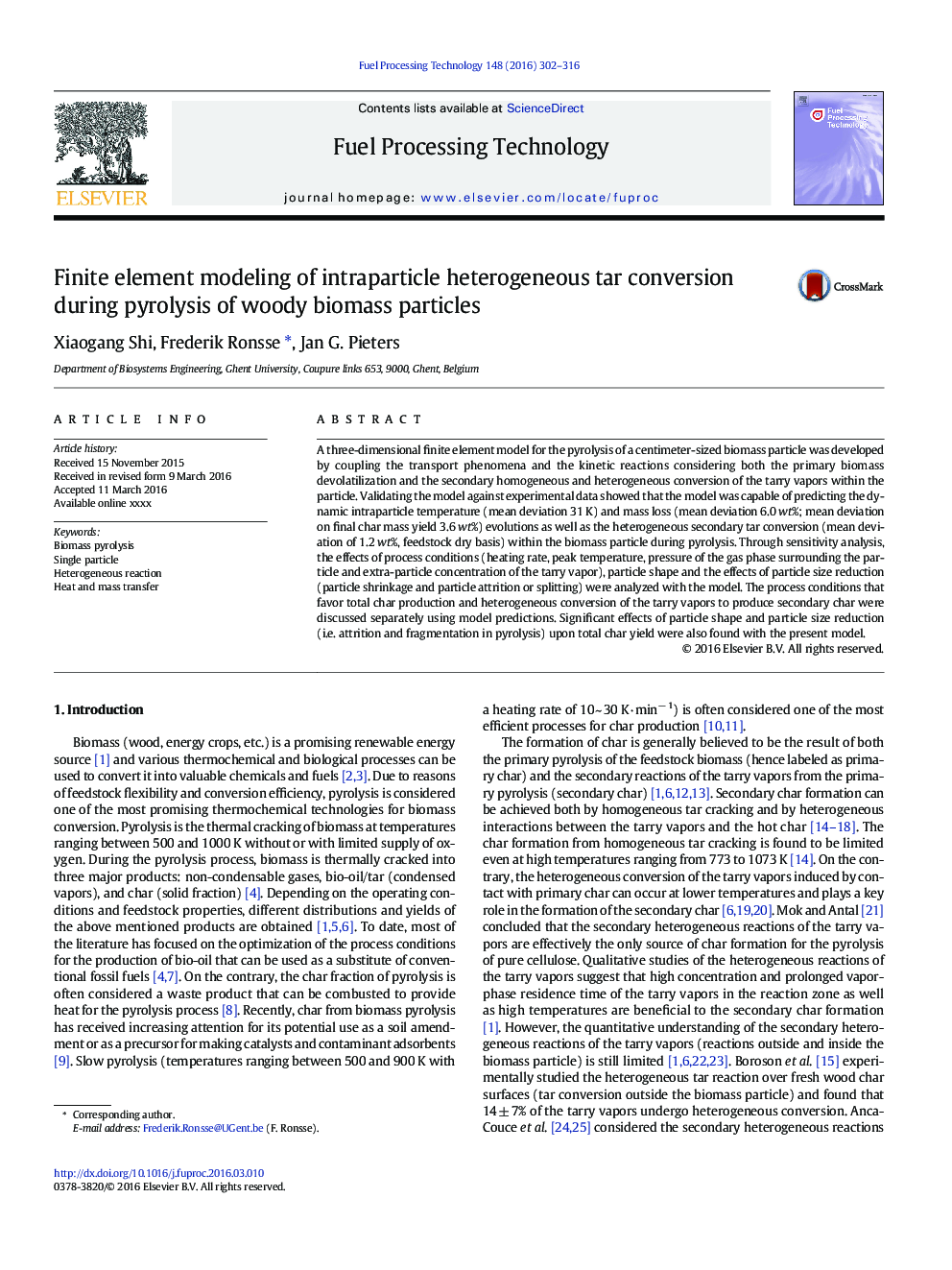| Article ID | Journal | Published Year | Pages | File Type |
|---|---|---|---|---|
| 6656662 | Fuel Processing Technology | 2016 | 15 Pages |
Abstract
A three-dimensional finite element model for the pyrolysis of a centimeter-sized biomass particle was developed by coupling the transport phenomena and the kinetic reactions considering both the primary biomass devolatilization and the secondary homogeneous and heterogeneous conversion of the tarry vapors within the particle. Validating the model against experimental data showed that the model was capable of predicting the dynamic intraparticle temperature (mean deviation 31 K) and mass loss (mean deviation 6.0 wt%; mean deviation on final char mass yield 3.6 wt%) evolutions as well as the heterogeneous secondary tar conversion (mean deviation of 1.2 wt%, feedstock dry basis) within the biomass particle during pyrolysis. Through sensitivity analysis, the effects of process conditions (heating rate, peak temperature, pressure of the gas phase surrounding the particle and extra-particle concentration of the tarry vapor), particle shape and the effects of particle size reduction (particle shrinkage and particle attrition or splitting) were analyzed with the model. The process conditions that favor total char production and heterogeneous conversion of the tarry vapors to produce secondary char were discussed separately using model predictions. Significant effects of particle shape and particle size reduction (i.e. attrition and fragmentation in pyrolysis) upon total char yield were also found with the present model.
Related Topics
Physical Sciences and Engineering
Chemical Engineering
Chemical Engineering (General)
Authors
Xiaogang Shi, Frederik Ronsse, Jan G. Pieters,
